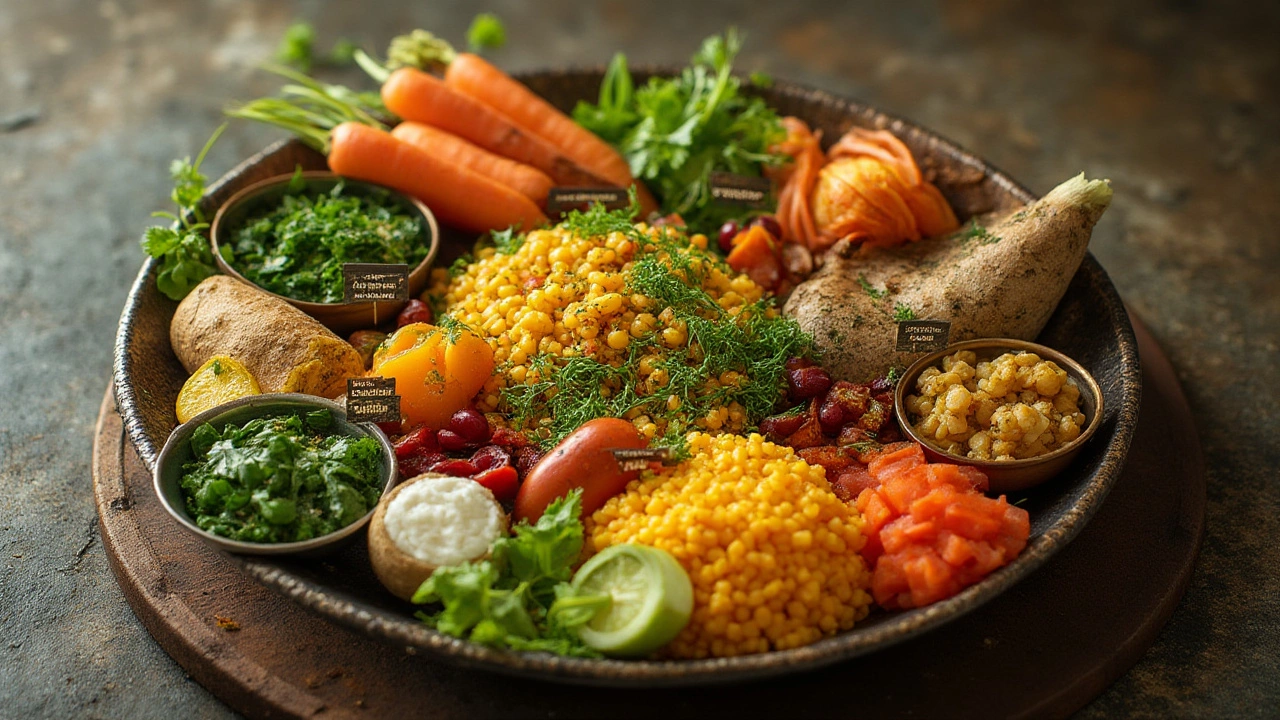Back in World War II, British pilots were rumored to eat heaps of carrots to see in the dark. Turns out, that was a clever bit of military propaganda, but it planted carrots in our brains as the ultimate eyesight food. But is there a vegetable that actually improves your eyesight, or is it all just an old myth dressed up with orange beta-carotene?
Science backs up some of the hype. Your eyes are delicate, high-maintenance organs. They need the right nutrients to turn light into vision, keep retinas healthy, and defend against damage. If you've ever squinted at the fine print or sat through hours of screen time, you probably wondered: "Is there something I could eat to help my tired eyes?" The good news is yes, especially if you enjoy gardening or homegrown food.
The Vision Superstars: Carrots and More
People always reach for carrots, and for good reason. Carrots are packed with beta-carotene, which our bodies turn into vitamin A—key for making the pigment you need to see in low light. But here's the twist: carrots aren’t alone. Spinach, kale, and Swiss chard bring more to the table. These leafy greens serve up lutein and zeaxanthin, which nestle right into the retina and act like sunglasses, soaking up nasty blue light and fighting the stress of bright screens or sunlight.
Red peppers, sweet potatoes, and even a scoop of corn add their own punch. Tomatoes give you lycopene; broccoli brings vitamin C and E. But not all vegetables are created equal. Some, like iceberg lettuce, deliver very little. The real powerhouses are the dark, leafy types and anything with a deep, rich color. Want your eyes to stay sharp? Eat a rainbow of vegetables—think bright orange, dark green, and deep red.
The numbers say it all. Check out these nutrition stats from the USDA Nutrient Database:
| Vegetable | Beta-Carotene (mg/100g) | Lutein+Zeaxanthin (mg/100g) | Vitamin C (mg/100g) |
|---|---|---|---|
| Carrots | 8.3 | 0.26 | 6 |
| Spinach | 5.6 | 12.2 | 28 |
| Kale | 9.2 | 18.2 | 120 |
| Red Bell Pepper | 2.4 | 0.5 | 127 |
What’s the takeaway? If you want to feed your eyes, pile your plate with kale and spinach, toss in carrots, and don’t shy away from a red pepper or two.
Don’t forget to eat them with a bit of healthy fat—think olive oil or avocado in your salad. Fat helps your body soak up all those eye-loving nutrients much better than munching on dry veggies alone.
Why Eyes Need These Nutrients
Your eyes are among the only organs exposed constantly to the outside world. Light, wind, pollution, and digital screens all put stress on them. Vitamin A works like oil for the engine, keeping the surface of the eyes moist and helping you see in dim light. A lack of vitamin A is behind a lot of night blindness and even permanent vision loss in parts of the world where people don’t get enough vegetables.
Lutein and zeaxanthin, two hard-to-pronounce but crucial antioxidants, hang out in the macula—the bullseye part of your retina that gives you clear, central vision. They help filter out high-energy blue light, the same stuff blasting from LED screens. Want to slow down eye aging and reduce your odds of cataracts or macular degeneration? Make lutein a regular part of your meals.
Vitamin C and E also do their part, patching up damage from daily sun and pollution exposure. They keep blood vessels happy and reduce the risk of those nasty "floaters" drifting across your vision.
The science isn’t all guesswork. A huge Age-Related Eye Disease Study (AREDS) with over 5,000 people showed that people who ate diets rich in these nutrients had a much smaller risk of losing sight as they aged. Doctors now urge everyone, not just seniors, to eat more of these vegetables to slow the downhill slide that comes with years of squinting and straining.
Quick tip—raw is great, but gently cooking spinach or kale can make lutein more available to your body. Just avoid drowning the veggies in boiling water, or the nutrients might run straight down the drain. Steam, sauté, or toss them into soups.

The Garden Advantage: Growing for Eye Health
Store-bought vegetables lose nutrients every day they sit on the shelf. When you pick spinach or kale straight from your garden and eat it soon after, you’re getting the freshest, most potent vitamins and antioxidants. You also skip the chemical residues and weird shelf-life coatings you find on some store produce.
Some gardeners swear by heritage carrots—those purple, yellow, and red varieties you don’t usually see in supermarkets. Studies out of the University of Wisconsin show that purple and red carrots may have even more antioxidants than regular orange ones. Keep the soil rich and loose, water regularly, and carrots practically grow themselves. Spinach and kale prefer cooler weather, so sow them in spring or fall. Give them a spot in partial shade, and they’ll reward you with tender, nutrient-rich leaves for months.
- When planting kale, thin seedlings to let the leaves spread and gather more sun—all the better for building up those eye-protecting nutrients.
- For carrots, sandy, well-drained soil is key. Rocky ground leads to weird, stubby carrots—and picking those is no fun.
- Don’t forget that dark, healthy soil adds even more minerals to your veggies, giving your eyesight an extra boost.
- Rotate your crops, mix in compost, and use mulch to lock in moisture and nutrients.
Even with a tiny garden, you can grow enough kale and carrots for daily salads. Container gardening works if you’re short on space. Put them on your terrace, balcony, or kitchen windowsill—just give them enough light and water.
Tips for Maximizing Eye Protection from Your Plate
Piling veggies on your plate is only half the job. Your body needs a little help absorbing these nutrients. Remember, vitamin A and carotenoids dissolve in fat. Add half an avocado, a drizzle of olive oil, or a handful of sunflower seeds to that spinach salad. Even a small amount goes a long way. Skip processed dressings loaded with sugar and chemical thickeners. Stick to real, whole-food fats for the best results.
Mix it up. Don’t just eat the same veggies every day. Rotate your greens. One day, have spinach with eggs for breakfast; on another, a kale and carrot smoothie. Toss red bell peppers into your stir-fries or snack on cherry tomatoes with hummus. Your taste buds won’t get bored, and your eyes will soak up a wide range of nutrients you can’t get from a single source.
Don’t ignore fruit, either—mango, cantaloupe, and even watermelon carry their weight for vitamin A. But if you’re keen on vegetables, focus on those with deep, saturated color and a proven nutrient record.
Small daily habits make the biggest difference. If you’re growing your own food, sneak in extra rows of Swiss chard or sow berry bushes for the long haul. Even kids can get in on the action—let them plant rainbow carrots or pick spinach leaves, and they’re much more likely to munch what they helped grow.
One last thing—skip the lure of supplements unless your doctor recommends them. Real vegetables deliver fiber, water, and a complex blend of nutrients that no pill can match. Science keeps circling back to the same advice: people who eat more actual veggies have healthier eyes, no contest. Trust fresh food. Your eyesight will thank you down the road.

